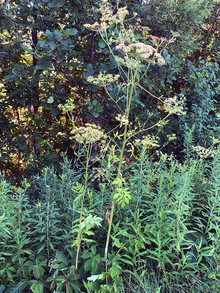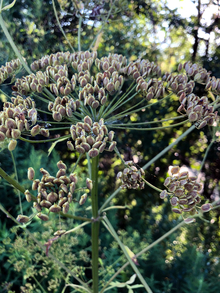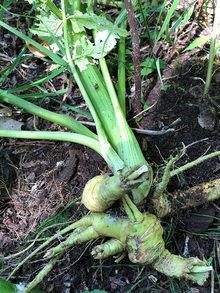Quick facts
Wild parsnip is an invasive species. Wild parsnip is on the Control noxious weed list meaning you must prevent the spread of this plant.
- Wild parsnip is found in disturbed areas and along edges.
- It invades slowly, but once established it spreads quickly and can severely modify open dry, moist, and wet-moist habitats.
CAUTION: contact with this plant can cause severe chemical burns and blistering when skin is exposed to sunlight. Avoid contact with the sap of the plant. Wear protective clothing and gloves if handling.
Wild parsnips should be reported. The Minnesota Department of Natural Resources provides detailed recommendations for reporting invasive species.
How to identify wild parsnip
- Wild parsnip (Pastinaca sativa) flowers only once and dies; perennial herbaceous plant is six inches high in the rosette stage.
- After bolting and when in flower, it can reach four to six feet tall.
- Taller, with larger flowers and stouter stem, than Queen Anne’s lace.
Stem
- Stout, grooved, hollow stems.
Leaves
- Rosettes are pinnately compound, green and shiny, with five to fifteen broad, ovate to oblong leaflets.
- Stem leaves are yellowish-green with alternate arrangement and have five to fifteen egg-shaped leaflets that are sharply toothed or lobed at the margins.
- Leaves towards top of the plant are smaller.
Flowers
- Flat-topped, broad umbel flower cluster two to six inches wide, with numerous five-petaled yellow flowers.
- Blooms from June to late summer.
Seeds
- Small (one fourth inch), flat, rounded, slightly ribbed, straw-colored and abundant; takes three weeks to ripen before they can reseed.
- Survive in the soil for four years.
Roots
- Long, thick taproot.
Reviewed in 2019




